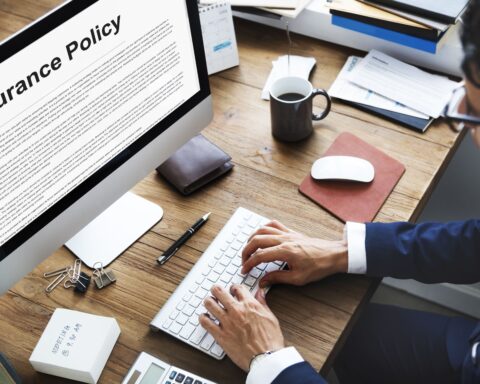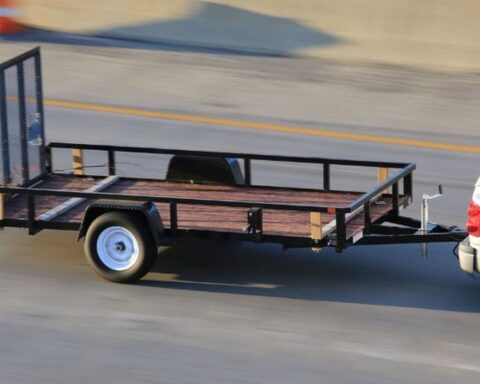Motorcycles are fun to ride, but they can be dangerous. Motorcycle deaths account for approximately 15 percent of all automobile accident deaths. Professional attorneys and personal injury lawyers at EAccidents report that one of the best ways to protect yourself and prevent motorcycle accidents is to know the laws in your state. Here are the most important motorcycle laws to know in California:
Registration and Insurance

You must obtain a motorcycle license to operate a motorcycle in California. The minimum age for obtaining a license is 16, and all motorcyclists must apply for a learner’s permit before obtaining a license. Obtaining a learner’s permit involves passing a vision exam, skills test, and knowledge test based on information from the California Motorcycle Handbook. You can find information and learning materials to help you study on the California DMV website.
Learner’s permits are valid for 12 months and prohibit driving at night, on the freeway, and carrying passengers. All applicants under 21 must hold their learner’s permit for six months before applying for a license.
All motorcycles must be registered with the California Department of Motor Vehicles and must have insurance with the following minimum liability amounts:
- $30,000 for physical injuries to multiple victims
- $15,000 for physical injury to an individual
- $5,000 for damage to property
You are required to display proof of insurance upon request by a police officer. If a motorcyclist is involved in an accident without proper insurance, the penalty is a 1-year license suspension, and you forfeit your right to receive damage or injury compensation, even if you are not at fault.
Equipment Requirements and Rules of Operation

All motorcyclists and passengers must wear a helmet at all times, and it must comply with regulations defined by the Department of Transportation. The helmet also must have a clearly visible DOT sticker.
In addition, all motorcycles must be equipped with the following:
- Left and right mirrors
- Functioning turn signals in the front and rear, unless the motorcycle was built prior to 1973
- An exhaust system compliant with the Motorcycle Anti-Tampering Act, unless it was manufactured prior to 2013
- Passenger footrests if passengers are being carried; passengers must use the footrests when the motorcycle is moving
- Handlebars that do not position the rider’s hands more than six inches above his or her shoulders when seated
When operating your motorcycle, headlights must be used at all times, day and night, unless the motorcycle was built before 1978. All other regular traffic laws apply to motorcyclists.
Lane Splitting

There are no regulations against lane splitting or lane sharing in California. Motorcyclists may share a lane by riding side by side and may ride in between two lanes of traffic going the same direction to move around cars. There are safety guidelines to follow to protect yourself and other drivers while lane splitting, including:
- Do not go ten mph more than surrounding traffic.
- Do not lane split at speeds greater than 30 mph.
- It is illegal to ride in the shoulder lane.
- Always consider surrounding traffic conditions.
- Never lane split around large vehicles like commercial trucks.
Accidents Happen

Even if you are as cautious as possible, accidents happen. It’s important to know what to do right after a motorcycle accident, so you can protect your property and the health of everyone involved. Motorcycle crashes can be especially dangerous since the motorcycle riders are extremely exposed and vulnerable to injury. If anyone is seriously injured in an accident, getting medical attention is the immediate course of action, of course. Beyond that, here are the proper steps to take after a motorcycle crash:
1. Call the police:
If there are major injuries, call 911 immediately. But if everyone involved is physically okay, you can call a local police station or another non-emergency line. The California Highway Patrol number is 323-906-3434. Having police observation and documentation of the accident ensures there is evidence on file that can help close a court case.
Police officers can also mediate disputes and make sure everyone involved is safe. The police will take statements from all parties involved, photographs, and measurements, and write an accident report.
They may even determine fault at that time. It’s a good idea to ask for the accident report number so you can look it up later.
2. Exchange information:

Exchange insurance and driver’s license information with the other parties involved. The easiest way to do this is usually by simply taking pictures of the other driver’s information on your phone. Your insurance company and lawyer will need this information to contact their insurance company and for all other communication purposes.
If you forget to exchange information or the other driver is taken to the hospital, the police accident report should have contact information for all parties, and you can contact them to obtain insurance information later.
3. Gather accident information:
For insurance purposes, take photos of the crash site and all vehicles involved, noting any damage caused by the accident and any personal injuries, no matter how small. Get the names and contact information of any present witnesses.
4. Contact your insurance company:

Inform your insurance company of the accident and share as many details as you can recall. They will likely ask you questions about the accident or request any photographs taken. Don’t call the insurance company of the other party, your insurance company will handle all communication and will inform you of the next steps to take.
5. Call a personal injury lawyer:
Get in touch with a local personal injury attorney that specializes in motorcycle and car accidents. This is especially important if you were not at fault, or you sustained any damage to your person or property. A personal injury lawyer will ensure that you get proper compensation and help you through the process of filing a claim.
6. Go to a doctor:

Even if you don’t think you have any serious injuries, it’s still important to see a doctor as soon as you can. With motorcycle accidents it’s very easy to sustain injuries that aren’t immediately noticeable, like a concussion, internal bleeding, or an orthopedic injury. Get checked out by a doctor and inform them of your accident to make sure there aren’t any unseen health concerns. If you do have a health problem that may have resulted from the accident, inform your lawyer and give them a copy of all relevant documentation.




